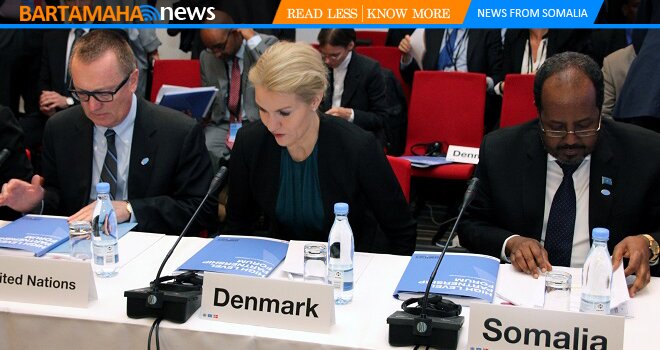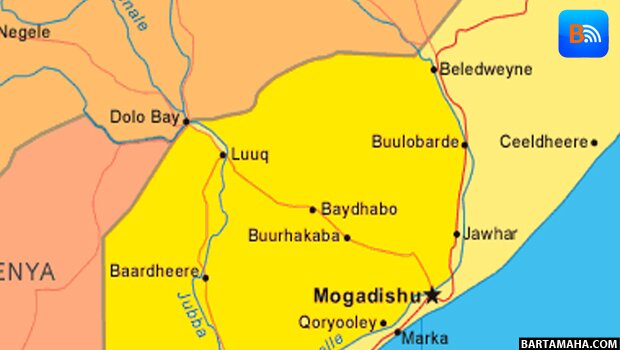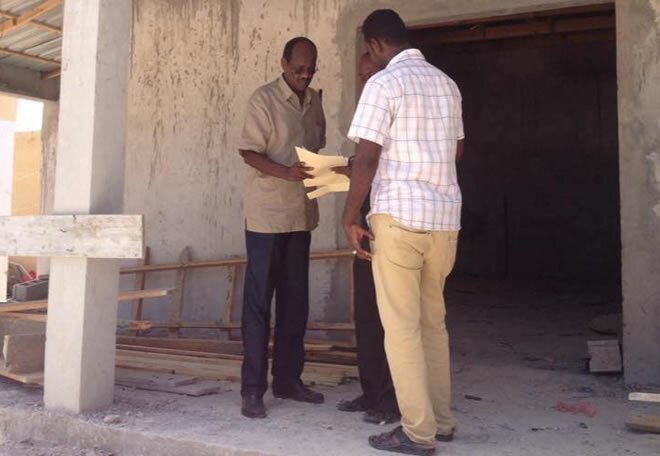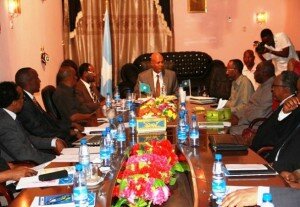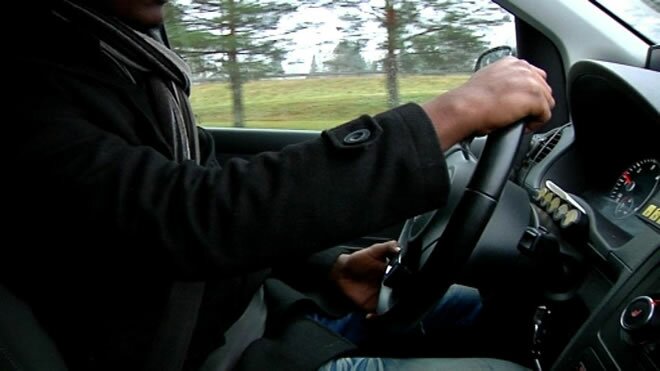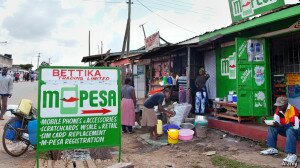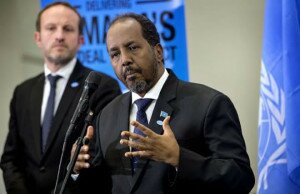A phoneful of dollars
The Economist
PEOPLE stream in as the doors to a massive stone building open. Guards in khaki uniforms wield ancient British rifles as men in crisp white dhotis and women in colourful saris direct the flow of customers toward the 14,000 people who work here, at the Mumbai branch of the State Bank of India. Gold-buyers go to the left where they are offered certified coins or ingots that come in sealed plastic cases. A dozen naval officers wait patiently: their salaries, like those of many state employees, are paid through the bank. At a counter upstairs, tellers help illiterate Nepalese migrant workers to send money home.
That is one way to provide financial services: have a bank do it. Defenders of this approach say that it brings the unbanked into the financial mainstream by getting them accustomed to using banks rather than informal services. But it is both expensive—bank branches cost a lot to build and staff—and inefficient. In India only a rich minority of citizens have bank accounts, and two-thirds of adults—many of them rural and poor—have no access to financial services at all. Why should they have to spend time, effort and money to travel to a bank branch?
There are alternatives. In the lush hills of South Africa’s Eastern Cape, elderly men and women queue up in the hot sun to press their fingers against fingerprint scanners in the backs of vans. After this they are given government-issued smart cards linked to accounts into which the government can electronically pay their monthly pensions, which previously were handed to them in cash. Take-up has been rapid. With electronic payment the elderly no longer have to queue for hours to get their monthly money. Nor do they risk having it stolen on the long walk home.
Kenya has gone a step further with M-PESA. This is a form of mobile money, used by 75% of Kenyan adults, that is sent from phone to phone using a simple text-messaging system. It has become so ubiquitous that some reckon almost half of the country’s GDP flows through it. It can be used to pay for energy bills, taxi rides and even vegetables in the market. Copycats have sprouted across Africa, particularly in places such as Zimbabwe or Somalia that have more or less ditched their own currencies and switched to using dollars. In such countries, where poor people may earn only a dollar or two a day, a dollar note is inconveniently high-denomination for the smallest transactions (coins are not widely used). But notes that are deposited with agents working for mobile-phone companies and turned into mobile money in a digital wallet can easily be split to pay for, say, a handful of tomatoes, says Ismail Ahmed, of WorldRemit, a remittance firm.
Such transactions may involve only small sums, but in recent years nimble startups have noticed that serving millions of people with little money can be profitable. Globally, 2.5 billion adults—more than half the world’s adult population—lack bank accounts. The widespread adoption of mobile phones, as well as advances in cloud-computing and data-crunching technology, have allowed firms to come up with ways of lowering the cost of lending money to, and moving and storing it for, these billions. These innovations are spawning an array of other financial services, ranging from mobile wallets to crop insurance and new types of microloans.
These services do not bring the unbanked into the financial mainstream so much as they extend the financial mainstream to the unbanked. Arjan Schutte of Core, a venture-capital firm that invests in financial-technology companies, says “the term ‘unbanked’ suggests a role for banks that’s largely assumed…But one big trend is the erosion of banks’ significance.”
The bundles of services that banks have traditionally provided—credit, money storage, payments and so on—are being picked apart and sold individually. Savers in the rich world are lending directly to borrowers through peer-to-peer websites. New sorts of remittance firms are allowing people to send money to relatives back home using pipelines that bypass banks and other traditional intermediaries, helping to bring down the hefty fees charged on such transfers. This disruption should improve the lives of the world’s poor, even as it challenges and alters the business models of mainstream lenders.
The world’s unbanked have never been without options for accessing financial services; they have just been without good options. In many developing countries, the poor still have scant access to savings and insurance products. Stashing money in mattresses puts it at risk of being stolen and means it neither accrues interest nor gets used more productively through lending, as it would be if it were in a bank. When money moves around it does so as cash, fuelling crime and staying beyond the reach of tax collectors.
One area where progress has been faster is credit. Some leading microlenders, such as Grameen Bank and Opportunity International, have been around since the 1970s. These days the best-run bits of the industry are admirably professional. Boosters point to examples such as Ghana, where women are able to borrow small amounts of money to stock vegetable stalls in markets.
In some cases, though, microlenders have overstretched, leading to credit bubbles and bankruptcies. Furthermore, economists continue to debate whether loans benefit the poor. Much of the new evidence emerging from countries such as Malawi suggests that it is more beneficial to help a farmer save the money needed to plant next year’s crop than to have him borrow it at annual interest rates of 30% or higher.
Moreover, microlenders’ coverage is patchy. Most of the world’s poor still turn to payday or informal lenders that charge exorbitant rates. These stir up controversy in the rich world, too. In Britain a new firm, Wonga, has been criticised for charging rates on short-term loans that, if annualised, would amount to more than 4,000% a year. (The firm says such figures are meaningless because its loans are usually repaid within a month and interest stops being added once a loan is overdue by 60 days or more.)
Mainstream banks have found it hard to serve clients at the low end of the income scale. The costs of their branch networks make it hard for them to make small loans or take tiny deposits profitably. And low interest rates have made it difficult for banks to make money on deposits because of a narrowing in the spread between the rates paid on deposits (usually nothing, or close to it) and the rates they charge borrowers. Oliver Wyman, a consultancy, reckons American banks lose money on 37% of customer accounts—meaning that even those of many middle-income Americans are unprofitable.
The poor, of course, are less likely to have bank accounts at all. In developing countries the richest 20% is more than twice as likely as the poorest 20% to have a bank account. Globally, less than 25% of people making $2 per day or less have accounts; when average daily income rises above $10, the banking rate rises to around 60%.
The unbanked include the majority of people in Latin America, the Middle East, sub-Saharan Africa and large parts of Asia, as well as nearly half in Eastern Europe. In some African countries banking rates are so low as to be negligible: in Sudan, for instance, less than 7% of adults have an account. Within OECD countries the rate is 92%, though with tremendous variation: over 90% in the Nordic countries, but little more than 70% in Italy—which has a sizeable underground cash-based economy—and under 50% in Mexico.
At least one in every 13 American households had no bank account in 2013; in households making less than $15,000 a year it was one in four. One-third of America’s unbanked were either black or Hispanic. The most frequent reason given for not having an account was that they did not feel they had enough money. (Other reasons were that they didn’t like dealing with banks and thought they were in inconvenient locations, which can be solved: Self-Help Credit Union found that more people used its services when it opened a branch in a strip mall and designed it to look like a check-casher, with fluorescent lighting and linoleum floors, than when it had a traditional bank-branch design, with plush carpets and leather chairs.)
For those who do have accounts, the level of service can vary enormously. In Britain, for instance, politicians have complained about the existence of around 270 “cash-machine deserts”, areas home to hundreds of thousands of poor people who live far from branches and banks’ free-to-use automated teller machines (ATMs). As a result they are often forced to use non-banks’ fee-charging ATMs.
In large parts of the developing world, a long walk to a cash machine is the least of savers’ problems. Some are quite prepared to earn what is in effect a negative interest rate to save cash, because keeping money at home leaves them vulnerable to thieves or pleading relatives. In Ghana and other West African countries people deposit savings with Susu collectors, who take small deposits each day and hold on to the cash for their clients for a fee. Similar informal savings accounts exist in India and the Philippines.
Poor people aren’t just forced to pay a premium for credit or savings; they are often deprived almost entirely of other financial products, such as insurance, whether for their crops, livestock or lives. Their inability to hedge risks has a variety of consequences. In Tanzania, uninsured small-scale farmers tend to plant crops they can eat, even though these may offer smaller returns than cash crops. In Uganda, poor farmers who are unable to lock in future prices for their crops are less likely to invest in high-return coffee production because of uncertainties over how much they will get paid.
Basic banking
Worries about uneven access to financial services are not new. For much of the past century governments have tackled the problem in one of two ways. The first, less successful approach has been to nationalise banks or otherwise coerce them into serving the poor. India, which nationalised its 14 biggest banks in 1969 (and a few more in 1980), was a leading proponent of this approach. Though it has since liberalised its banking system, it still forces banks to provide services in remote villages. Even so, by 2011 only 35% of Indian adults had formal bank accounts. Most European governments have either forced banks to offer free “basic” accounts to the poor or have done so themselves through state-owned institutions, such as post offices.
The second approach has been to do nothing more than the occasional wringing of hands. This has been less unsuccessful than one might imagine. For many countries, economic growth has probably done far more than any government policy to bring people into the banking fold.
Yet the recent combination of mobile telephony, cloud computing and new business models is likely to have a greater impact than previous decades of either top-down planning or the trickle-down of economic growth. By the end of 2013, there were 219 mobile-money services in 84 countries, with more than 60m account-holders. More than half of the services were in sub-Saharan Africa. Some of these are gaining a foothold elsewhere: in Afghanistan, for instance, M-PESA is used to pay the salaries of policemen who were previously paid in cash. Many reportedly thought they had received large pay increases because the officers handing out their pay were no longer able to take a cut.
Mobile phone-based services make moving money cheap enough to enable other financial innovations that improve the lives of the poor, says Jim Roth of Leapfrog Investments. Bima, for instance, is a Swedish firm that sells life, accident and health insurance using mobile phones. Its low distribution costs allow it to offer cover at premiums as low as $6 a year. AllLife, a South African firm that offers life insurance to people with HIV, reduces its underwriting risk by sending its customers text messages reminding them to take their medication. M-SHWARI, a banking service, allows its customers to use mobile phones to deposit savings into “locked” accounts that will only unlock on a specific date, such as when school fees need to be paid.
Mobile-phone data is also being used to inform credit-underwriting decisions. For instance, the venture-investing team at Accion, a microfinance group, is working with companies whose data suggest that a villager who tops up his card on the same day each week and passes by more than two mobile-phone masts during the week—and thus has reliable financial habits and travels quite a lot—is likely to be a better borrower than someone who stays put and tops up irregularly.
Take-up of M-PESA and its like has been swifter in poor countries than rich ones because such services do not have to compete with an extant banking model: customers choose not between traditional banks and mobile money, but between mobile money and cash under the bed.
Yet there is still space for inventiveness in rich countries where the financial architecture tends to be built around banks. Progreso Financiero (PF), a storefront lender operating in Texas, California and Illinois, offers loans of between $250 and $3,500, mainly to Latino immigrants with no credit histories or bank accounts. To determine a potential borrower’s creditworthiness, it uses a proprietary algorithm with more data points than those of traditional credit bureaus. PF charges higher interest than mainstream banks but far less than the payday or auto-title lenders to which its clients would otherwise turn. In seven years of operation PF has made more than 500,000 loans. Its boss, Raul Vazquez, says default rates are “in the single digits”.
Perhaps belatedly, banks are beginning to adapt to serve low-income customers—generally with prepaid cards rather than with full-service accounts. For many years, the prepaid market was the wild west: virtually unregulated, with numerous steep and hidden fees and no deposit insurance offered to customers. That is starting to change, less because of government intervention—though America’s Consumer Financial Protection Bureau has started looking hard at prepaid—than because of competition.
Bluebird, for instance, a prepaid card issued by American Express and Walmart, places depositor funds into custodial accounts at a bank with deposit insurance. Chase offers a low-cost prepaid card called Liquid, which gives users fee-free access to the bank’s huge ATM network for deposits and withdrawals but does not require an account at the bank. Regions Bank, based in the American Southeast, goes even further, offering not just prepaid cards but also money transfers, remittances and low-fee cheque cashing for non-account-holders—essentially, everything a neighbourhood cheque-cashing joint does, but at markedly lower cost. Regions also offers no-fee savings accounts to its prepaid card holders. Such bank-accounts-on-cards are also on the rise in Europe and poor countries.
Other banks are being forced to respond to the mobile-money revolution in kind. Equity Bank in Kenya, for instance, allows customers to use its banking services through their mobile phones in direct competition with M-PESA. In Europe, BNP Paribas has launched Hello, a cheap bank accessed through smartphones, in four countries.
You’re not making this easy
Yet progress remains uneven. Research by the World Bank has found that countries with similar levels of income often display very different levels of financial inclusion. The main reason for this disparity is government policy. In many countries regulation is keeping people out of the financial system. In slums in India or Nigeria many people are unable to provide birth certificates or utility bills to meet onerous requirements aimed at preventing money laundering. In other countries discriminatory laws, such as restrictions on the ability of women to enter into contracts (and hence open bank accounts), contribute to the considerable gender gap in access to banking.
Even where regulation does not directly hamper financial inclusion, it often discourages it. In many countries where governments have sought to expand access to banking by fiat, India and Brazil among them, state-owned banks misallocate and misprice credit, freezing out private innovation and forcing private banks to misprice loans themselves to remain competitive. Quotas on branches and restrictions on new entrants (including foreign banks) exacerbate these problems.
In contrast, countries that encourage innovation and help banks and companies to deal with regulatory obstacles—for example, by providing official identification cards that make it easier for banks to meet rules requiring them to know their customers—have proved more successful at bringing the poor into their financial systems.
There are other ways in which governments can help the process along. One is to make more benefits payments electronic. Another is to bring more clarity to rules on mobile money in order to encourage more banks to enter the business, and to assuage telecoms companies’ fears about regulatory risk in financial services. The benefits of bringing more of the world’s 2.5 billion unbanked into the formal financial system would be enormous.
Comments
comments
 Calendar
Calendar













